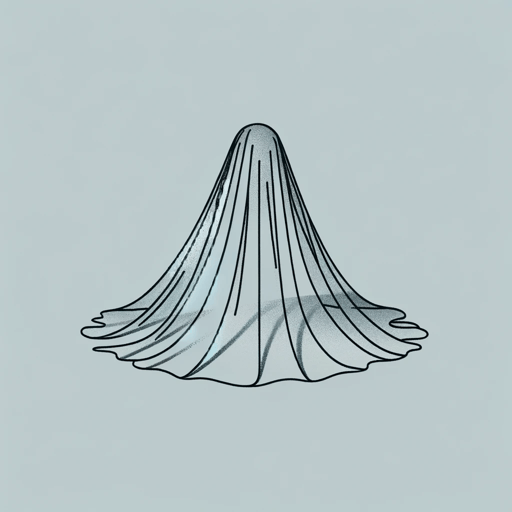23 pages • 46 minutes read
Nathaniel HawthorneThe Minister's Black Veil
Fiction | Short Story | Adult | Published in 1836A modern alternative to SparkNotes and CliffsNotes, SuperSummary offers high-quality Study Guides with detailed chapter summaries and analysis of major themes, characters, and more.
Summary and Study Guide
Summary: “The Minister’s Black Veil”
“The Minister’s Black Veil,” by American author Nathaniel Hawthorne, was first published anonymously in 1836. Hawthorne, author of the novel The Scarlet Letter, is known for exploring Puritanism in his works, which typically are set in New England. Hawthorne himself was born in Salem, Massachusetts, and was descended from John Hathorne, one of the judges in the Salem witch trials. Embarrassed by his ancestor’s role in the trials, Nathaniel Hawthorne added a “w” to his name to distance himself from him. Despite this shame, Hawthorne was influenced by his Puritan history and frequently wrote on the subject of human sin and guilt. His works tend to highlight Puritans’ rigidity, grimness, and repressiveness as well as their perseverance and moral integrity. The Minister’s Black Veil” depicts a young parson, Mr. Hooper, whose fixation on Original Sin and humans’ innate depravity results in lifelong alienation and suffering, a price he is willing to pay for eternal salvation. Like many of Hawthorne’s works, it presents the Puritans in a nuanced light, denying neither their strengths nor their failings. This study guide refers to the online edition published by Universidad de la Laguna.
One Sunday, in the town of Milford, Massachusetts, Mr. Hooper, a young parson, surprises his congregants when he emerges wearing a black veil that covers all but his mouth and chin. The people are unnerved by the veil, which seems to separate him from the rest of the world. They speculate on the reason for this change, some suggesting he has gone mad. Despite their discomfort, the people find that the veil seems to make him a more engaging speaker. His sermon, which addresses the concept of secret sin, unnerves and enraptures them, making them feel as if he has looked inside them to see their sins.
Mr. Hooper surprises the people by continuing to wear the veil even as he officiates a funeral and a wedding. The people gossip about him, most believing that the veil reflects a grave sin. A group of congregants attempt to ask him why he is wearing it, but they are fearful and intimidated in his presence. They begin to shun him on the street, and children chase each other pretending to be him.
When his fiancée, Elizabeth, asks him to remove the veil, Mr. Hooper insists that the veil must separate him from all other people, including her, and that one day, they all must remove their veils. Elizabeth is concerned about the gossip in town and does not want him to be the center of scandalous rumors. Mr. Hooper, exclaiming how lonely he is behind his veil, begs her to remain with him. However, when he reiterates that he can never remove the veil, Elizabeth leaves him.
Mr. Hooper is hurt to see people avoid him on the street or stare after him as he passes. He detests the sight of his own appearance in the veil, never looking in the mirror. People conclude he is tormented by a horrible crime. However, the veil also brings him some prestige. Believing him to have congress with greater forces and to have an understanding of sin, dying men request to have him at their bedsides, and even the governor comes to hear him speak.
After a long life, Mr. Hooper lays dying. Among those tending to him are young Reverend Clark and Elizabeth, who despite refusing to marry him has always felt affection for him. When Reverend Clark asks if he is ready to lift the veil, Mr. Hooper summons his strength and sits up in bed, adamantly refusing to allow them to remove it. He asks why people have always avoided him when every person in fact wears their own black veil every day. He laments that people hide their true selves from their friends, from their loved ones, and from God. He is buried with the veil intact.
Related Titles
By Nathaniel Hawthorne

Dr. Heidegger's Experiment
Nathaniel Hawthorne

Ethan Brand
Nathaniel Hawthorne

My Kinsman Major Molineux
Nathaniel Hawthorne

Rappaccini's Daughter
Nathaniel Hawthorne

The Ambitious Guest
Nathaniel Hawthorne

The Artist of the Beautiful
Nathaniel Hawthorne

The Birthmark
Nathaniel Hawthorne

The Blithedale Romance
Nathaniel Hawthorne

The Hollow of the Three Hills
Nathaniel Hawthorne

The House of the Seven Gables
Nathaniel Hawthorne

The Marble Faun
Nathaniel Hawthorne

The Maypole Of Merry Mount
Nathaniel Hawthorne

The Scarlet Letter
Nathaniel Hawthorne

The Wives of the Dead
Nathaniel Hawthorne

Young Goodman Brown
Nathaniel Hawthorne

